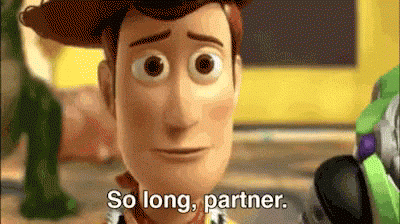Why Is Copyediting Important?
Copyediting is quality assurance.

Photo by
on
Think you can get away with not copyediting your content? Think again.
Your audience values error-free content. The quality of your written content affects their purchases and their perception of your brand.
No matter what type of content you are releasing to the world, you need a copy editor. Nothing says unprofessional and untrustworthy like poor language.
Plenty of research confirms the value of copyediting.
Copyediting is an important function for the integrity of both print and digital content, a 2007 study reported.
Readers can tell when a news article isn’t edited, and it affects their perceptions about the news and their willingness to pay for it, according to a 2015 study. Even college-aged people value edited content free of errors: “Digitally savvy young people picked up on editing differences and reacted negatively to unedited content,” says an American Press Institute blog post about the study.
People have similar standards for marketing copy. A SurveyMonkey survey found that 85% of millennials are less likely to buy a product advertised with errors, and the same is true for 83% of people with a household income of $75,000 and higher.
Poor spelling and grammar are warning signs of an email scam.
And, of course, editing contributes to the success of books: 74% of book authors who earned more than $5,000 in sales invested in editing, while 53% of authors who earned less than $100 in sales did not invest in editing, according to a 2017 BookBaby survey of nearly 8,000 indie authors.
But I get it. You have a lot on your plate. Editing your content falls by the wayside in the rush to share it with the world.
That’s where Pristine Editing comes in!
We offer professional editing services that integrate seamlessly into your existing workflow. Send us your copy, turn your attention to other tasks, and in no time at all, we’ll return your pristine content to you.
Your audience will get the full impact of your words without being distracted by weird phrasing or misplaced punctuation.
Whether you’re a publication with tight deadlines, a freelancer or a small business launching a website and a newsletter, or a large company or organization about to release a white paper or cross-platform marketing campaign, Pristine Editing can contribute to the unwavering high reputation of your brand.
Kick-start a conversation with Pristine Editing by filling out this two-minute project request form.
Enjoy this post? Buy me a coffee in support.
Hi, I’m Jaime, editor and owner of Pristine Editing LLC. To get to know me better, and for more editing tips, sign up for my quarterly email newsletter! You can also follow me on LinkedIn and Instagram. And don’t miss out on my free style guide template.
I Need to Make Sure You Know This One Thing About Editors
Recently, there was yet another round of layoffs in the editing world.
While it’s just the latest event in a yearslong trend, I wanted to say something about it nonetheless.
So I dropped work on my website redesign — coming in mid-September! — to hit you with this important broadcast … slash rant.
Here it is.
The first roles media companies tend to cut in times of financial struggle include copy editors.
These companies don’t want to reduce the quantity of content they publish. Unfortunately, that often means reducing the quality instead.
Last week the Texas Tribune laid off 11 employees, including its entire copy desk. (So long, copy editors who help to make sure the news is clear and accurate!)

In June of this year, the Los Angeles Times cut 74 employees, and nearly a third came from news and copy editor ranks.
The trimming of editorial staff has been happening for years and years.
I was leading the copy desk at Time Out in 2017 when The New York Times cut its copy department, letting go of more than 100 copy editors.
The same thing is happening in the indie book world.
When times are tough, self-publishing authors can’t afford every round of editing. So they pass on a copy edit or proofread, or they combine edits.
(You all know how I feel about combo line and copy edits.)
I understand that, and I would much rather you share your stories with the world than not at all.
But I just want to make sure you know one thing:
*Copyediting and other forms of editing are important. They provide value. They provide quality assurance.*
And they do so across industries, increasing sales and readership.
Women are 81% less likely to buy a product advertised with spelling or grammar errors, and 77% of men agree.
Likewise, readers reported that poor writing, bad writing, grammar, spelling errors, mistakes, and language cause them to stop reading a book.
Copyediting upholds the integrity of journal articles, one study found.
Participants in another study “gave higher ratings to journalistic stories that had been edited than those that hadn’t.”
All of those surveys and studies show the efficacy of human editing, not AI or editing software — which is another important broadcast/rant I’ll grace you with later.
That’s all, folks.
Cheers,
Jaime
P.S. If you 100% believe in the power of editing and want me to edit your next project, don’t hesitate! Fill out this form.
Enjoy this post? Buy me a coffee in support.
Hi, I’m Jaime, editor and owner of Pristine Editing LLC. To get to know me better, and for more editing tips, sign up for my quarterly email newsletter! You can also follow me on LinkedIn and Instagram. And don’t miss out on my free style guide template.
Case Study: Tablet Magazine
How I helped Tablet Magazine by copyediting a longform article in two days

Photo by
on
Situation
In November 2022, Tablet Magazine, whose daily newsletter I edit, asked me to copyedit an unprecedented project: a 24,000-word story that would be published just after the Jewish holidays.
(FYI, that’s the size of a novella. The daily newsletter is 1,300–2,500 words.)
“It’s an incredibly moving and profound piece, and a pleasure to read,” the editor told me. The copy would be ready for me in mid-December, and I would have a week and a half to edit it.
Tablet has talented writers on staff and publishes nuanced, thought-provoking content, so I eagerly added the project to my schedule.
Task
On December 5, the same editor emailed me again: “Can you edit it in two days if I send it to you tomorrow?” Ah, news organizations with their fluid timelines.
It was Tablet’s biggest magazine event of the year. All hands were on deck, and the design team had put in a lot of work to make the digital story look amazing.
The editors at Tablet had been immersed in this story for months and needed fresh eyes.
Action
Because it was the end of the year, when everyone tries squeezing in projects before the holidays, my agenda was packed.
But I rearranged my entire schedule. I burned the midnight oil. And I delivered the copyedit of what was indeed an incredible story to the editor by the required deadline.
I gave this incredible piece justice by removing errors in grammar, punctuation, spelling, syntax, and style, and I flagged discrepancies in dates, names, and other details in a story that features a web of many storylines.
You can read the story, “The Rower” by David Samuels.
Result
Here is the resulting testimonial from the editor, Jeremy Stern:
“Jaime ensured that our biggest magazine event of the year — a near book-length essay that was reported over multiple years and continents, and included dozens of well-known and unknown characters and historical events — was as professionally copyedited as a major publisher’s printed book, fulfilling every exacting editor and reader’s expectation of error-free, stylistically uniform prose. She also did so on a brutally short deadline, which made the result even more impressive. I would enthusiastically work with her again on similar projects in the future.”
Why I Loved This Project
The story was incredible. So much time and effort has gone into creating it, and I was able to use my copyediting skills to polish the piece for publication, removing lingering issues that would distract readers and discourage them from reading 24,000 words.
I was able to accomplish that within Tablet’s time restrictions. If you’re considering using a freelance copy editor but are concerned that working with one would delay your content’s publication, know that it’s very feasible to integrate the copyediting step into your process.
As a freelance editor, I have control over my own schedule, with the ability to reorganize my agenda to suite client needs and accommodate their timelines.
Enjoy this post? Buy me a coffee in support.
Hi, I’m Jaime, editor and owner of Pristine Editing LLC. To get to know me better, and for more editing tips, sign up for my quarterly email newsletter! You can also follow me on LinkedIn and Instagram. And don’t miss out on my free style guide template.
Client Etiquette: How an Editor Should Interact with a Client Always
And the recent etiquette mistake I made even though I knew better
Photo by
on
Let me tell you about a recent mistake I made as an editor.
I was doing a developmental edit of a 3,000-word blog post for a tech startup. This startup did not have its own writers; instead, it hired a service that provided a handful of writers to produce regular blog content.
My job was to ensure that these writers adhered to the voice and style of the tech startup, and that the content was error-free and engaging. I would review each post twice: first a developmental edit, then a copy edit.
During the developmental edit, I would leave comments to the writers with suggestions for improving structure and organization; simplifying or clarifying language; explaining a complex idea more thoroughly or accurately; and meeting the tech startup’s style guidelines.
The content was complicated—think artificial intelligence and sales processes—and the writers were not subject experts.
Still, after more than a month, the startup’s editorial manager and I felt that the writers were not listening to our feedback as well as they should. It seemed we were repeatedly giving them the same notes, and the writing at times was rushed and sloppy.
That created more work for me as the editor and delayed the content production timeline for the startup.
So the editorial manager sent an email to the writing service pointing out the blog posts that were weak and why they needed more attention, adding that some writers didn’t seem to be making an effort to research and understand the material. The writing service responded and promised to improve.
However, when I began to edit the next 3,000-word post that came in, I was dismayed to see that many of the same issues remained.
One particular section of the post, a large paragraph, not only didn’t address our previous feedback but also just didn’t make sense. The writer clearly didn’t understand the tech or even the industry of the startup, and as a result, the sentences were vague and confusing and the information shared was incorrect.
I sighed, then highlighted the section and left a comment: “This isn’t working. The writer doesn’t seem to understand the subject matter. Please fix.”
That comment unleashed the kraken.
https://media.giphy.com/media/3ogwFUjNax6RYPvJm0/giphy.gif
The owner of the writing service wrote a furious response. He said my comment was disrespectful and unhelpful (to summarize a much longer rant).
And you know what? He was right.
I had forsaken a cardinal rule of editing that I had learned long ago:
Always be kind and helpful in comments to the writer.
Etiquette demands that an editor should always be conscious of tone of voice when interacting with and providing criticism to the writer.
We have to show respect for the people who create content out of nothing! Being a writer is challenging—especially when you’re writing about something of which you know nothing (a common occurrence for a professional writer).
Beyond that, I knew very well that comments to writers should never just point out problems. They should always suggest a solution in tandem.
What is a writer supposed to do with a comment that says “This doesn’t work” but doesn’t provide a way forward? Maybe that writer struggled to get to that point, simply didn’t know what to do to strengthen that section, and just needed some guidance. In that case, receiving a comment like mine would be frustrating and demoralizing.
Leaving helpful comments is a practice I uphold with every client I have, and I also firmly believe it’s a great way to filter out editors who aren’t a good fit for you.
If your editor isn’t supplying you, the writer, with comments that not only point out the problem but also offer an actionable solution or next step—in a pleasant, respectful tone of voice—then it’s time to look for another editor.
Which is why I was disappointed in myself for leaving such a short comment. I knew better.
Sure, the editorial manager and I had already given the writing service a lot of feedback. That was why I left the comment I did—I imagined the writer would make the connection between my comment and that feedback.
After all, the writer is responsible for consuming and listening to all constructive criticism in order to do better in the next round.
But a comment in a Google doc was not the place to get snarky.
I should have listed all the reasons the section did not work and share a suggestion. And then the editorial manager could have stepped in to have a larger conversation with the writing service about meeting the tech startup’s needs.
As an editor who also writes professionally, I recognize how important it is to have an editor who respects the work you put in to creating content.
And that respect should shine through in every interaction writers have with their editors.
Enjoy this post? Buy me a coffee in support.
Hi, I’m Jaime, editor and owner of Pristine Editing LLC. To get to know me better, and for more editing tips, sign up for my quarterly email newsletter! You can also follow me on LinkedIn and Instagram. And don’t miss out on my free style guide template.
